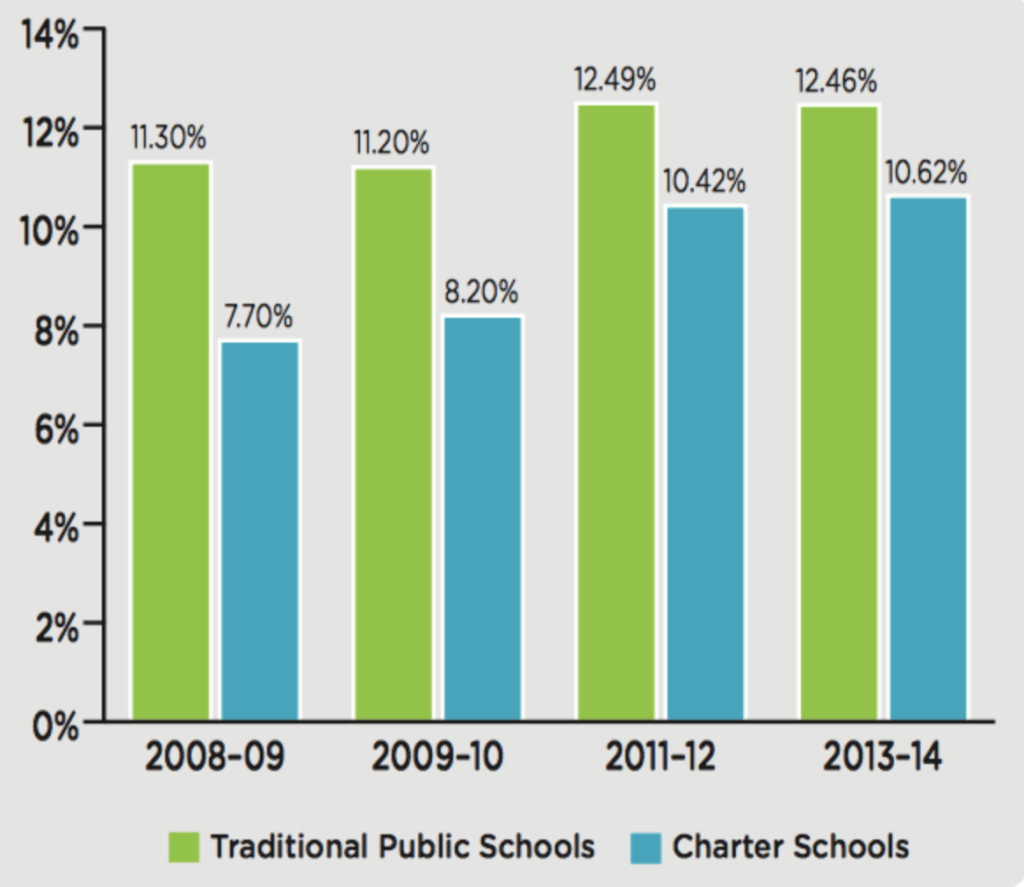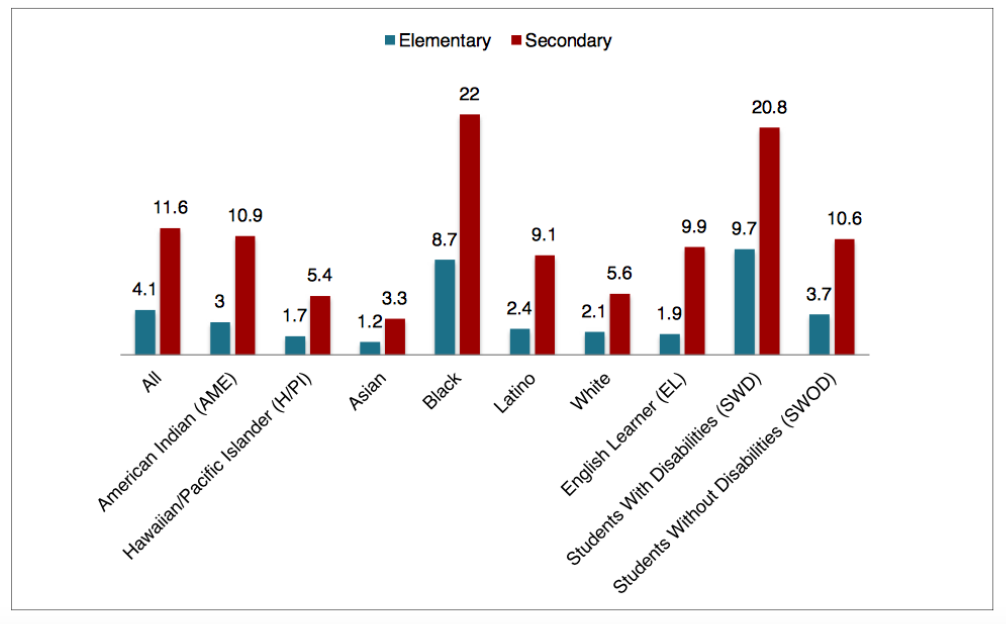Education for Everyone? Charter Schools and Disability
In February 2019, a State Education Department investigation found that Success Academy, a controversial New York City charter school chain, did not properly serve its students with disabilities. The report noted that Success Academy did not meet the Individualized Education Programs (IEPs) of all its students with disabilities and at times failed to provide required testing accommodations and special education instruction. This investigation is not a unique one, nor a surprising one. In a 2016 interview with New York Magazine, a Harlem Success teacher remarked, “I’m not a big believer in special ed,” claiming instead that students’ maturity and family lives were the real issues. With that type of pervasive rhetoric within high-achieving New York City charter schools, it is unsurprising that in recent years numerous parent groups and advocates have filed complaints against charter schools for not providing adequate education for students with disabilities.
Since charter schools champion themselves as essential providers of high-quality education for the most underprivileged and disenfranchised students, this problem is intensely disturbing and time-sensitive. The “no-excuse” charter school system that permeates NYC (and its complete reliance on test scores as a measure of achievement) ostracizes and devalues students with disabilities (particularly students of color with disabilities). The number of charter schools across the country is growing rapidly. To create an equitable education system for all students, charter schools must utilize a more nuanced metric to evaluate school performance that incorporates factors other than test scores.
A 2015 study published in Educational Policy analyzes the reasoning behind charter schools’ obsession with test scores. The study cites a discourse that promotes charter schools as “better” than other schools, where “better” is most often determined via standardized testing. This narrow understanding of how to evaluate effective education creates a normative education model that marks students with disabilities as liabilities, as their test scores might lower school averages.
Pressure for charter schools to meet performance standards further augments the importance of high test scores. Within the competitive marketplace that is specific to charter schools, schools that “perform poorly” are at risk of closure. For that reason, especially for newer charter schools, the pressure to maintain high test scores often outweighs the pressure to cater to a wide-ranging student body (one that includes students with disabilities). Employing a variety of official and unofficial strategies, many charter schools discourage or prevent students with disabilities from enrolling. As disability is always put in conversation with race, black and brown students with disabilities often experience this subtle exclusion most severely.
A study published by the City University of New York examines this issue at length and cites several ways in which charter schools effectively exclude students with disabilities from attending their schools. Most commonly, charter schools will do this by not providing the services mandated in IEPs, by repeatedly over-disciplining students with disabilities, and by advising families of children with disabilities that their student will be better served elsewhere. Each of these practices makes students with disabilities feel unwelcome and undeserving of a charter school education. A complete overhaul of the charter school evaluation process must occur in order to foster an educational environment in which students with disabilities are welcome.

Figure 1: Proportion of Students with Disabilities
Source: National Center for Special Education in Charter Schools
While some charter schools keep their number of students with disabilities low to ensure high test scores, other charter schools simply do not have the resources available to provide a quality special education program. The CUNY study cites a shortage of qualified staff and administrative personnel as one of the biggest barriers to charter school special education programs. Due to the increased autonomy of charter schools, these schools receive less technical assistance and support from state education authorities to help serve students with disabilities. With limited outside resources and significant pressure for high test scores, charter schools are not incentivized to recruit students with disabilities.
For the students with disabilities that do gain enrollment at charter schools, a quality education is still not guaranteed. Under the guise of creating a learning environment in which students can be “successful”, students with disabilities often experience excessive suspension and other disciplinary action. A comprehensive 2016 report published by the Center for Civil Rights Remedies studied this phenomenon by analyzing school discipline data for the 2011-2012 school year for over 5,000 charter schools. The report found that over 20% of the charter schools under analysis suspended students with disabilities at a rate that was over 10% higher than the suspension rate for students without disabilities. Even worse, over 200 of the analyzed charter schools suspended more than 50% of their enrolled students with disabilities during the 2011-2012 school year. These numbers are shocking, and yet information around suspension rates of students with disabilities is not readily accessible. Working under less oversight than public schools, charter schools can often let their disciplinary practices for students with disabilities slide under the radar. To remedy this disciplinary discrepancy, charter schools must find alternative ways to correct student behavior through methods such as restorative justice and increased student support programs.

Source: The Civil Rights Project
As Eva Moskowitz, CEO of Success Academy Charter Schools, states in her opinion piece in the Wall Street Journal, “Suspensions convey the critical message to students and parents that certain behavior is inconsistent with being a member of the school community.” Students with disabilities, who are suspended far more often than their peers, absorb this “critical message.” Charter schools teach these students that their very existence is disruptive, damaging, and incompatible with the school community.
If charter schools are to fulfill their original purpose of educating the most vulnerable members of society, they must undergo a complete ideological shift to redefine what success and good behavior look like. Within this redefinition, charter schools must realize that metrics such as college acceptance rates and standardized test scores do not always best describe the value of a special education program. Instead, a more nuanced evaluation process is desperately needed and charter schools must learn to report the test scores of students with disabilities in a way that does not diminish school standings.
This ideological shift must also transform how charter schools view punishment and discipline, particularly for students of color with disabilities. By increasing student support and counseling, as well as introducing restorative justice programs, charter schools could drastically reduce suspension rates of students with disabilities and improve their academic experiences.
As more charter schools open their doors in the upcoming years, school personnel must receive training and information about special education requirements and best practices. And, perhaps most importantly, disability must not be framed as a “liability.” Instead, the normative framework that currently decides a charter school’s worth must be expanded to include and to celebrate students with disabilities. Charter schools have the opportunity to change the U.S. educational framework and to educate millions of young minds in a new, creative way. However, the current high-achieving charter school system overlooks students with disabilities, creating unconscionable educational inequity.
By: Eleni